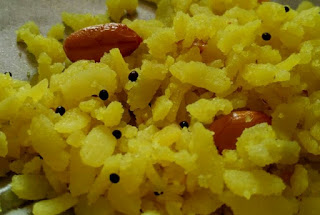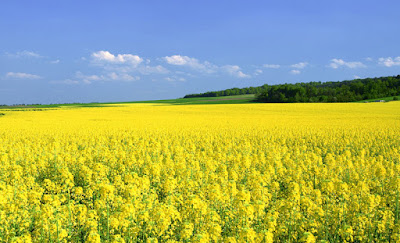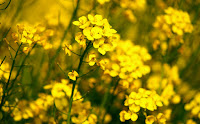This post is dedicated to the most commonly used but the most unheeded ingredient in Indian cooking. Mustard seeds. I had always wondered about this particular ingredient and what purpose they serve. After some research, I thought they need to be brought into the spot light.
Rai in Hindi. Mohri in Marathi. Kadugu in Tamil.
Rai in Hindi. Mohri in Marathi. Kadugu in Tamil.
They are black.
They are round.
They are tiny.
How many of us actually know why we use mustard seeds? To add pops of colour to the dish? To add a bit of bite? My brother-in-law thought it was only to test the temperature of oil! And that’s when I thought maybe the first ingredient that’s added to any dish (Alright fine that was writer’s liberty.. first ingredient is always oil. Got you!) should be the first ingredient I write about. :)
Yes, mustard seeds are added to hot oil to test whether the oil has come up to the right temperature. The moment your mustard goes pop-pop-pop is the moment you know your oil is ready for your wonderful recipe.
But, you should know that these innocent looking spheres provide much more to your dish than that. They are wonderful sources of the much-need nutrition that your body needs.
Amino acids
Selenium
Zinc
Omega-3 fatty acids
Vitamin B-Complex
Copper
Magnesium
Manganese
What? Really?
That’s a big list, isn’t it? So the next time you add these to your recipe, take a moment to admire them for the nutrition they provide to you.
I don’t stop there. When I am cooking and researching on recipes and ingredients, I want to know everything there is to know about an ingredient. What are the varieties? Which varieties are used in which recipes? Which countries and cuisines use it? What is the history of that ingredient? For those of you interested, read on!
Mustard seeds come in 3 varieties – White/Yellow, Brown and Black.
Most of the mustard produce comes from Canada, China, India, US and certain temperate pockets of Europe.
Looking at mustard fields makes me think of Wordsworth’s poem “Daffodils”. Dainty little pretty yellow flowers dancing in the wind.J Also reminds me of Kajol and Shahrukh and the mellow cow with a cow bell in DDLJ!
Most of the mustard produce comes from Canada, China, India, US and certain temperate pockets of Europe.
Looking at mustard fields makes me think of Wordsworth’s poem “Daffodils”. Dainty little pretty yellow flowers dancing in the wind.J Also reminds me of Kajol and Shahrukh and the mellow cow with a cow bell in DDLJ!
Back to topic, the mustard plant is used to make a delicious green-leafy veggie called “Sarson ka saag” in Northern India and most of Indian cooking uses the black/brown variety of seeds (mainly for tempering). Bengali cooking imbibes both black and yellow mustard seeds. I hear “Macher Jhal” is a delicacy. Note to self - Should try it out!
And how can I miss the famous American Mustard Sauce? It is made from ground yellow mustard, with a water/acidic base like wine or vinegar. Personally, I am not a fan of this sauce and not even a big fan of processed or bottled ingredients [read – NOT HEALTHY!].
To be honest, I don’t keep a count to the ‘T’ of each and every nutrient in my food. But I do try to do a recce of the ingredients I use in my cooking to make sure that at the end of the day, I am satisfied of including a wide variety in the day’s or week’s meals.
On that note, be healthy and be happy – look at the beautiful mustards swaying in the breeze..




No comments:
Post a Comment